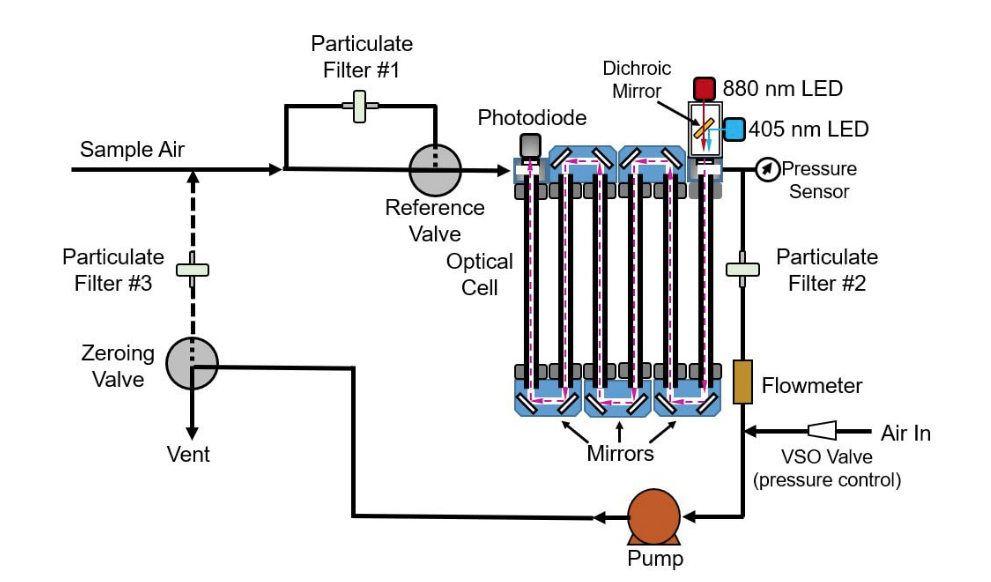Black Carbon Photometer | 2.B Tech
Portable analyzer for black carbon particles for urban environments.
The BCP uses the simple, direct technique of long-path photometry to quantify in real time the total extinction and mass concentrations of particles in the aerosol phase (gas + particles). This direct approach avoids the artifacts and other problems associated with instruments currently available on the market, such as the most common current technique of aethalometry, which uses filters to pre-concentrate samples for analysis.
Features :
- Direct measurement of extinction by particulates at two wavelengths (880 nm and 405 nm) enables real-time measurements of particulate matter, including black carbon, and PM2.5
- Direct approach eliminates the need to preconcentrate samples on filters, thereby avoiding associated artifacts
- Low power consumption (~16 watt on average after warmup)
- Lightweight (~19.2 lb, 8.7 kg), standard rack-mount size
- Long-life pump (~15,000 hours)
- Touchscreen
- Internal data logger capacity: 10 Gbytes
- USB port for portable data logging
- Both serial and user-scaled analog voltage outputs
- Convenient user interface to microprocessor, via either the touchscreen or serial, including calibration parameters (gain and zero) and mass conversion coefficients
- Selectable measurement time of 10 s or data averaging times of 1 min, 5 min and 1 hr
- Built-in zeroing capability
- Requires little technical maintenance and is suitable for continuous operation under field conditions (capable of battery-powered operation)
- Economical when compared with other commercially available instruments
Theory of operation :
The figure below is a simplified schematic diagram of the Black Carbon Photometer. Sample air is continuously drawn through the instrument and its optical detection cell by an air pump at a flow rate of ~1.0-1.6 L/min. The reference valve alternately bypasses or sends the sample air through a PTFE particulate filter (labeled Particulate Filter #1 below) that removes all particulates in the sample, thus allowing the alternating measurement of a light intensity in the absence of particulates (Io) and presence of particulates (I). The Beer-Lambert Law is then used to calculate the particulate extinction (Bext) from I and Io : Bext = 1/L ln(Io/I)
Here, L is the path length (2.1 m).

Particulate extinction is the sum of two factors: aerosol absorption and scattering. At the longer wavelength of the Black Carbon Photometer (880 nm), absorption is a much larger contributor to extinction. In polluted urban air, the response of the instrument at 880 nm is primarily due to black carbon absorption. At the shorter wavelength of the instrument (405 nm), scattering dominates and the instrument response is more indicative of total aerosol concentration.











